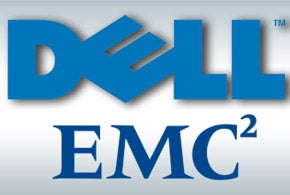At the EMC World 2016 conference this week, the newly christened Dell Technologies company that will emerge after the merger of EMC and Dell is officially completed this summer will have one single channel program for partners to navigate.
While the details of that program are still being worked out, Julie Christiansen, senior director for global partner strategy and operations for channel, partners and alliances at EMC, said there will be one global channel structure spanning all the units of Dell Technologies. The major business units of Dell Technologies will include a new Dell EMC unit focused on enterprise infrastructure as well as a Dell unit focused on PCs. The other core units will consist of VMware, RSA, a SecureWorks unit focused on IT security services and Virtustream, a public cloud computing platform.
One of the biggest channel priorities will be to set up a combined deal-registration system as part of an overall “channel-first” sales strategy, Christiansen said. As such, the combined program, scheduled to go into effect in February 2017, will borrow heavily from an EMC channel program that puts more emphasis on partners to actually drive sales versus simply fulfilling deals closed by a direct sales force.
Christiansen noted that 65 to 70 percent of EMC’s overall business is now driven through the channel. That compares with about 40 percent for Dell.
In effect, Dell Technologies will take advantage of the merger to recraft the channel strategies of both organizations to identify “the good, the bad and the ugly,” she said.
In the meantime, the EMC and Dell channel programs are similar in that they are both incentive-rich, and there is also much less overlap in terms of the partners that participate in both programs at this point, Christiansen said.
In a similar vein, Jay Snyder, senior director for global alliances at EMC, said there will also be one unified alliance program for partners that are either service providers, OEMs, systems integrators or focused on a particular vertical industry. At present, the Dell alliance program is only focused on systems integrators and OEMs.
While partners can participate in the channel and alliance programs, the current goal is to drive half a billion in revenue per year through the top 12 to 15 alliance partners, Snyder said. Overall, he expects revenue driven by alliance partners to grow 30 percent on a compound annual basis. Much of those goals will be achieved via more focused business planning with alliance partners that will leverage their own intellectual property to create better segmentation across vertical industries regions and technology categories. Once that is achieved, direct and indirect sales representatives will also gain more insight into the total Dell solutions portfolio, Snyder said.
While both Dell and EMC are prohibited by law from addressing much more of their plans for unifying their channel programs until the merger is final, both Snyder and Christiansen said there will be a lot more focus on how end customers are consuming and using technologies created by Dell Technologies. Rather than simply focusing on what entity wrote the purchase order, more emphasis will be put on how those technologies are consumed in order to spur additional adoption.
Naturally, it may take time for the combined companies’ channel ambitions to come to fruition. But the channel appears to be at the center of the $67 billion integration project that represents the largest merger ever attempted in the IT industry to date.
Michael Vizard has been covering IT issues in the enterprise for more than 25 years as an editor and columnist for publications such as InfoWorld, eWEEK, Baseline, CRN, ComputerWorld and Digital Review.

